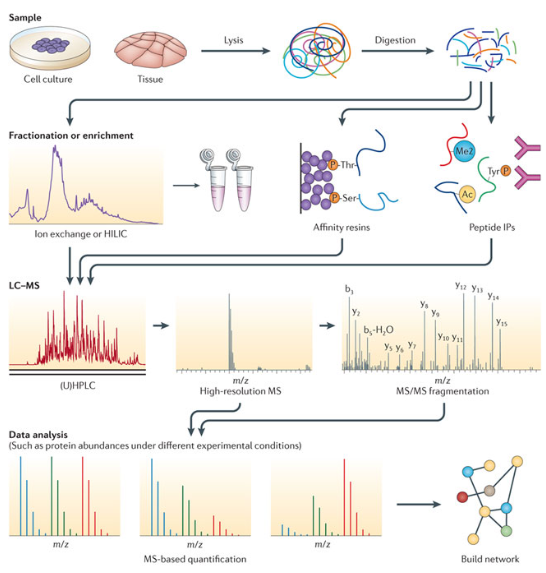Sample Preparation Service
The proteome comprises gene products expressed at varying levels. Preparing protein samples is a critical step in proteomics research because the quality and reproducibility of protein extraction significantly affect downstream mass spectrometry identification efficiency and accuracy. Identifying and quantitatively comparing low-abundance proteins presents a significant challenge in proteomics.
The proteome is a highly complex system. Unlike the chemically homogeneous nature of DNA and RNA, proteins exhibit considerable heterogeneity, varying greatly in size, charge, hydrophobicity, and structure. High-abundance proteins, such as actin, tubulin, or human serum albumin, along with complement system proteins and antibodies, form essential components of the proteome. With appropriate pretreatment, the low-abundance regulatory proteins most relevant to cellular responses can be more effectively detected. Moreover, many proteins undergo post-translational modifications and contain various non-peptide groups, making protein separation highly challenging. Currently, there is no universal method for protein sample preparation in proteomics research. Preparation protocols differ based on sample origin, the physical properties and subcellular localization of the target proteins, protein abundance, and matrix effects.
MtoZ Biolabs provides sample preparation services and continuously develops customized methods to meet diverse client requirements.

Altelaar A. F. M. et al. Nat Rev Genet. 2013.
Figure 1. Protein Sample Preparation Workflow
Services at Mtoz Biolabs
1. Tissue and Cell Homogenization
2. Sample Purification (Removal of DNA, RNA, and Reduction of Disulfide Bonds)
3. Removal of High-abundance Proteins
4. Protein Extraction
5. Protein Purification and Enrichment
6. Protein Digestion and Hydrolysis
Service Advantages
1. State-of-the-art Ultrafiltration Technology Platform
2. Experienced Technicians Skilled in Processing Various Sample Types
3. Comprehensive Quality Control Workflow
4. Project Design Tailored to Target Protein Characteristics
MtoZ Biolabs, an integrated chromatography and mass spectrometry (MS) services provider.
Related Services
How to order?







